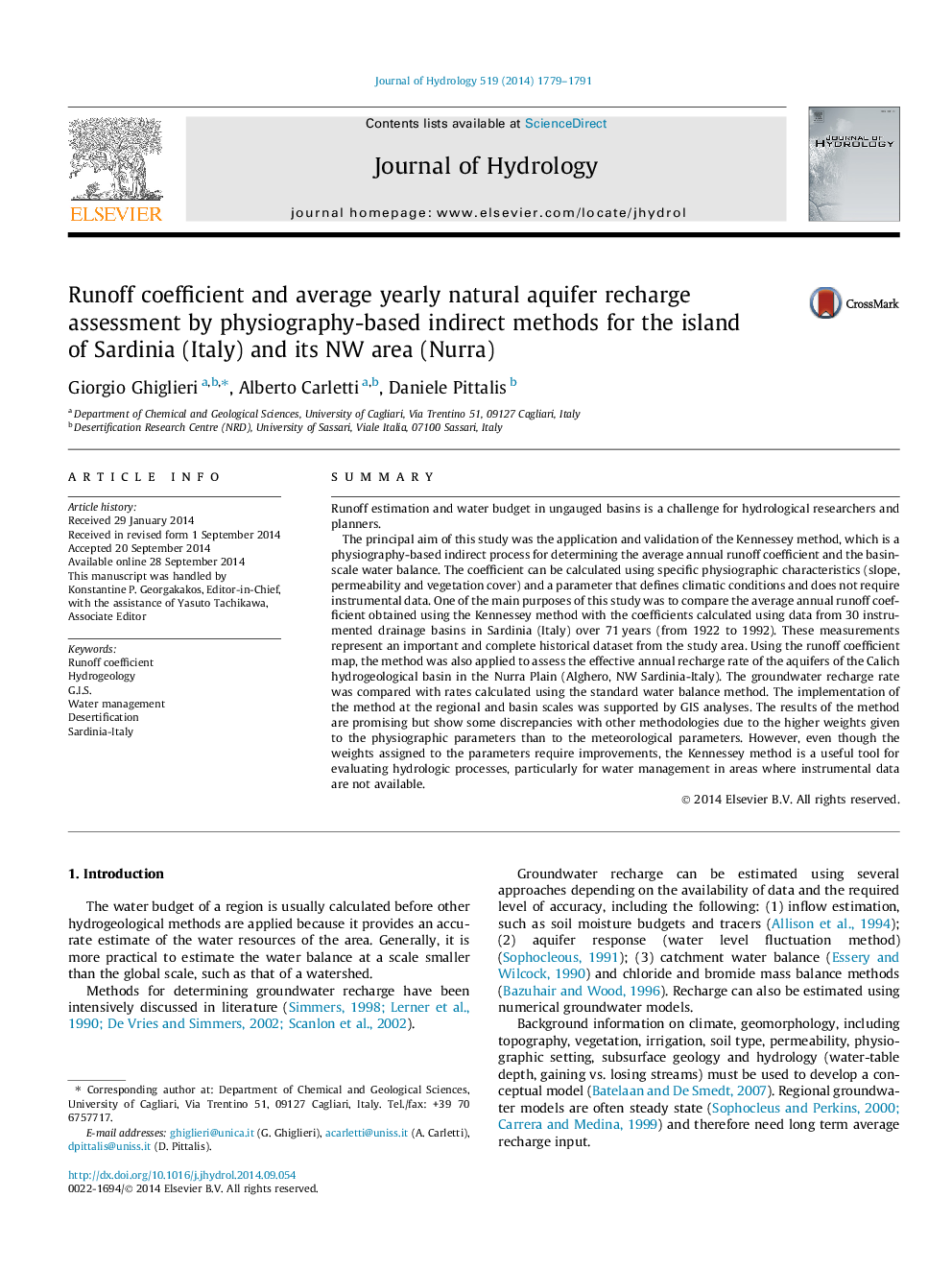| Article ID | Journal | Published Year | Pages | File Type |
|---|---|---|---|---|
| 6412000 | Journal of Hydrology | 2014 | 13 Pages |
â¢Runoff coefficient is calculated by using a physiography-based indirect method.â¢GIS was used to combine physiographical spatial data in a runoff coefficient map.â¢The calculated runoff coefficient was validated using data from instrumented basins.â¢The method was applied to assess the effective annual recharge rate of aquifers.â¢The obtained groundwater recharge was compared to standard water balance method data.
SummaryRunoff estimation and water budget in ungauged basins is a challenge for hydrological researchers and planners.The principal aim of this study was the application and validation of the Kennessey method, which is a physiography-based indirect process for determining the average annual runoff coefficient and the basin-scale water balance. The coefficient can be calculated using specific physiographic characteristics (slope, permeability and vegetation cover) and a parameter that defines climatic conditions and does not require instrumental data. One of the main purposes of this study was to compare the average annual runoff coefficient obtained using the Kennessey method with the coefficients calculated using data from 30 instrumented drainage basins in Sardinia (Italy) over 71Â years (from 1922 to 1992). These measurements represent an important and complete historical dataset from the study area. Using the runoff coefficient map, the method was also applied to assess the effective annual recharge rate of the aquifers of the Calich hydrogeological basin in the Nurra Plain (Alghero, NW Sardinia-Italy). The groundwater recharge rate was compared with rates calculated using the standard water balance method. The implementation of the method at the regional and basin scales was supported by GIS analyses. The results of the method are promising but show some discrepancies with other methodologies due to the higher weights given to the physiographic parameters than to the meteorological parameters. However, even though the weights assigned to the parameters require improvements, the Kennessey method is a useful tool for evaluating hydrologic processes, particularly for water management in areas where instrumental data are not available.
